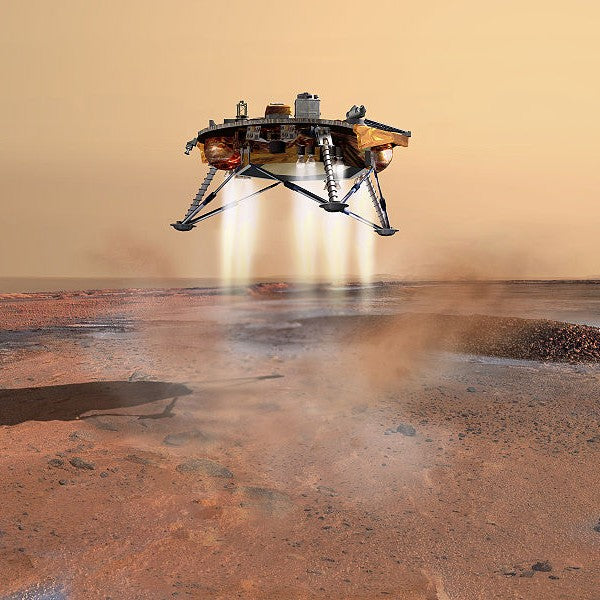Eleven years ago on this day, the Phoenix Mars Lander zipped up to the Red Planet for an important mission – though aren’t all space-related missions pretty darn important? According to scientists at NASA, this mission had three overall goals: to study the history of water in the Martian arctic (the key to unlocking the story of past climate change), search for evidence of a habitable zone, and assess the biological potential of the ice-soil boundary.
What nifty instruments did the robotic spacecraft use to get this data? A chemistry lab, TEGA, a microscope, a conductivity probe and cameras. This is probably the most commonplace compilation of scientific tools I’ve referenced in these blogs thus far; except for TEGA, which I want to dig a little more into because I looked it up and it’s rather neat!

(Image Credit: NASA)
TEGA stands for Thermal and Evolved Gas Analyzer. It’s a robotic arm-like device constructed to be a combination high-temperature furnace and mass spectrometer instrument used to help scientists analyze Martian ice and soil samples. The arm delivers samples to a hopper designed to feed a small amount of soil and ice into eight tiny ovens about the size of an ink cartridge in a ballpoint pen. This last part was adorable to think about because you already know I automatically envisioned eight miniaturized ovens (that look like mine at home, of course) before I read the rest of the description. Oh, Brittany’s brain.
Once the sample is safely stored in the oven, the temperature is slowly increased at a consistent rate. This process, called scanning calorimetry, provides data for the transitions from solid to liquid to gas of the different materials in the sample. The ice and other volatile materials are vaporized into a stream of gases while the temperature of the furnace can get as hot as 1000-degrees Celsius or 1800-degrees Fahrenheit – probably pretty close to what a swampy mid-summer day feels like here in Maryland (can you tell I’m not a fan? Well obviously, a fan can’t type a blog - ba-dum-ch!)
But back to gases…these are called evolved gases and are transported via an inert carrier to the other part of the instrument: the mass spectrometer, a device used to measure the mass and concentrations of specific molecules and atoms in a sample. The mass spectrometer is very sensitive and can detect even the smallest trace of anything in the material – so yeah, that’s cool!
In August 2008, Phoenix concluded its three-month mission examining Martian elements. The lander functioned for another two months before reduced winter sunlight caused insufficient energy for further studies. Phoenix was NASA’s sixth successful landing on Mars out of seven attempts, but the first to victoriously venture into a Martian polar region.
Fun fact: this Mars mission was the first to be led by a public university in NASA history. It was led directly from the University of Arizona’s campus in Tucson, with project management at the Jet Propulsion Lab in Pasadena, California and project development at Lockheed Martin in Denver, Colorado.
As I'm sure you can tell, Mars inspires a lot of our work. Thank you, Phoenix!



